Jecheon Wild Herb Village (제천 산야초마을)
18.0Km 2024-02-26
3 Oksunbong-ro 6-gil, Susan-myeon, Jecheon-si, Chungcheongbuk-do
Jecheon Wild Herb Village, nestled between Geumsusan Mountain and Cheongpungho Lake, benefits from a pristine mountain environment that has supported the production of medicinal herbs and forest products for oriental medicine since ancient times. This village continues its agricultural practices to this day, offering visitors the opportunity to experience natural medicines, forest products, and agricultural goods. For those interested, there are options to stay in the village for a week or a month, allowing for an extended exploration of its natural bounty and traditions.
Cheongnyeongpo Scenic Spot (청령포)
18.0Km 2024-04-02
133 Cheongnyeongpo-ro, Yeongwol-eup, Yeongwol-gun, Gangwon-do
Cheongnyeongpo Scenic Spot is one of Yeongwol's representative tourist destinations, also well known as Joseon's 6th king Danjong’s home in exile. The Namhangang River surrounds its three sides, and there are mountains on the other side. It is only accessible by boat. For reference, there is no set schedule for the departure and arrival of the boat, and it starts operating once the travelers are seated to some extent. Travelers are welcomed by tall pine trees when entering Cheongnyeongpo. There are many historical sites, such as Danjong's home in exile, a pine tree about 600 years old called Gwaneumsong, and Manghyangtap Tower, which serves as an observatory.
Seondol Cliff [National Geopark] (선돌 (강원고생대 국가지질공원))
18.1Km 2022-12-28
373-1, Bangjeol-ri, Yeongwol-gun, Gangwon-do
+82-1577-0545
Seondol Cliff features a large split rock standing over the curving river below. The scene created by these two natural elements appears other-worldly. A rocky outcrop appears to have been cut away from the main cliff with a giant knife. Geologically, it was formed by corrosion of the limestone bedrock.
Mancheonha Skywalk (만천하 스카이워크)
18.5Km 2025-10-24
10 Otbawi-gil, Jeokseong-myeon, Danyang-gun, Chungcheongbuk-do
+82-43-421-0014
Mancheonha Skywalk is located on a cliff of Nahangang River approximately 80-90 meters above waters. Visitors can enjoy walking on the clouds with the view of the waters below. Panoramic view of Danyang and Sobaeksan Mountain can be seen at the observatory. Thrill-seekers can enjoy the glass bottom walkway as well as nearby attractions including zipline and alpine coaster.
◎ Travel information to meet Hallyu’s charm – variety show “Omniscient Interfering View”
This is where Lee Young-ja received a plaque of appreciation, and Jeon Hyun-moo and Yoo Byung-jae gave a celebratory performance. Although often featured as an event venue on TV shows, Mancheonha Skywalk is best known for its observatory, with sweeping views of Danyang’s scenery. It attracts many tourists not only for the views but also for the variety of activities it offers.
Danyanggang Jando Trail (단양강 잔도)
18.6Km 2022-12-29
San 18-15, Aegok-ri, Danyang-gun, Chungcheongbuk-do
+82-43-422-1146
Danyanggang Jando Trail is a 1.2-kilometer-long trekking path along the Namhangang River. With an amazing view of the surrounding area, the trail is a must-walk when visiting Danyang. There are various attractions nearby, including Mancheonha Skywalk and Suyanggae Light Tunnel, offering a tour experience that covers geology and history.
Yoseonjeong Pavilion & Yoseonam Rock (요선정·요선암)
18.6Km 2022-12-28
13-39, Dowonunhak-ro, Yeongwol-gun, Gangwon-do
+82-33-370-2140
Yoseonjeong Pavilion is located in a valley with a clear stream water flowing below. Next to the pavilion is a large rock with the word Yoseonnam inscribed on it. During the Unified Silla period, there was a small hermitage where Yoseongjeong Pavilion stands today. The hermitage was frequented by monks Doyun and Jinghyo, who had founded Heungnyeongseonwon Temple on a foothill of Sajasan Mountain to teach the values and principles of Buddhism. Today, next to the pavilion is a small stone pagoda and a statue of seated Buddha.
Café Slowly (카페 느리게)
18.7Km 2024-04-02
37 Cheongnyeongpo-ro, Yeongwol-eup, Yeongwol-gun, Gangwon-do
It's a cafe located near Cheongnyeongpo Scenic Site. Visitors can enjoy the riverside scenery of Yeongwol from a window seat. The signature drinks are Corn-spänner and Barley Dango. Corn-spänner is a sweet, creamy drink made with corn milk and cream, and Barley Dango is a drink made with finely ground barley, roasted grain powder, homemade cream, and dango. Guests are warmly welcomed into the cafe by the resident cat, making it especially suitable for travelers who love pets.
Jecheon Resom Forest (리솜포레스트( 제천))
18.8Km 2023-10-26
365 Geumbong-ro, Jecheon-si, Chungcheongbuk-do
+82-43-649-6000
Resom Forest, located in Jecheon, Chungcheongbuk-do, is an environmentally friendly resort that strives to use reusuable and recycled products. With numerous forests, gardens, and valleys, visitors can see beautiful nature all year round.
Located between two mountains, the resort offers perfect views from every angle. Anions and phytoncides from the forest help relax the restless mind and body.
Forest Resom Have9 Wellness Spa (포레스트 리솜 해브나인 웰니스 스파)
18.8Km 2025-10-23
365 Geumbong-ro, Baegun-myeon, Jecheon-si, Chungcheongbuk-do
Forest Resom Have9 Wellness Spa is in Baegun-myeon, Jecheon-si, Chungcheongbuk-do. Its Healing Spa Zone has the Bade (meaning bathing) Pool offering various hydro-massages for different acupressure points; the Water Energy Spa; and the Sasang Constitutional Spa. The Aqua Play Zone is a children's pool where parents and children can have fun together. There are slides for children, a lazy river, and a beach pool. The Outdoor Spa Zone is equipped with various facilities, including the Infinity Pool where visitors can enjoy the outdoors while surrounded by the forest.
Doljip Sikdang (돌집식당)
19.1Km 2024-02-26
11, Jungang 2-ro, Danyang-eup, Danyang-gun, Chungcheongbuk-do
Doljip Sikdang is a restaurant near the Danyang Bus Terminal that serves dolsotbap (hot stone pot rice) and garlic dishes. Indeed, its gondeure maneul jeongsik (thistle and garlic set menu) has captured the tastebuds of its regulars for two generations. The restaurant’s set menus, such as heungmaneul jeongsik (black garlic set menu), doljip jeongsik (Doljip set menu), gondeure maneul jeongsik (thistle and garlic set menu), and gondeure jeongsik (thistle set menu), all feature garlic dishes. It also serves a la carte dishes like bulgogi, maneul yukhoe (garlic and beef tartare), Danyang maneul tteokgalbi (grilled garlic and galbi patties), suyuk (boiled pork slices), and deodeok gui (grilled deodeok). Notably, side dishes are made with garlic, Danyang’s specialty, which isn’t too spicy and taper off to gentle sweetness.
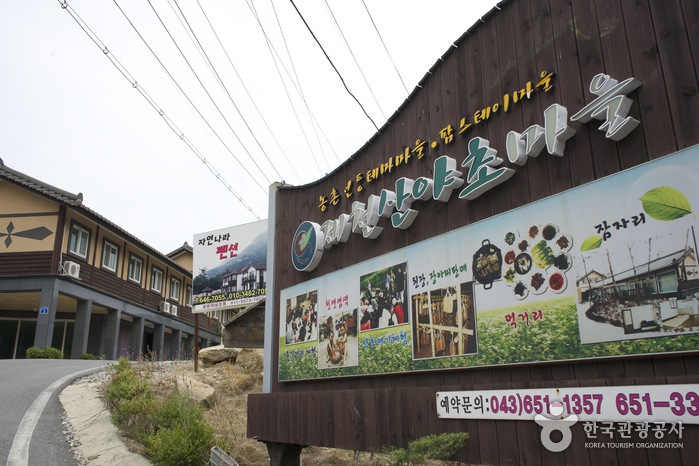

![Seondol Cliff [National Geopark] (선돌 (강원고생대 국가지질공원))](http://tong.visitkorea.or.kr/cms/resource/00/2026100_image2_1.jpg)
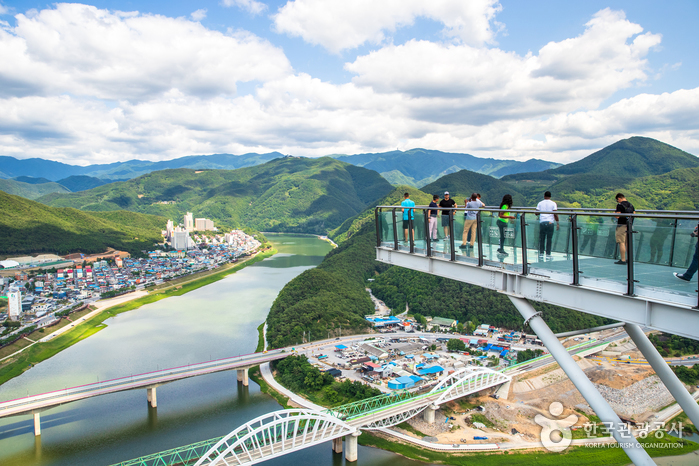
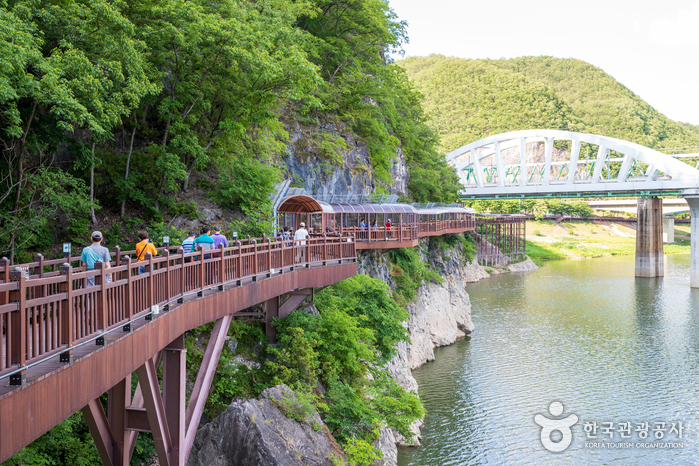
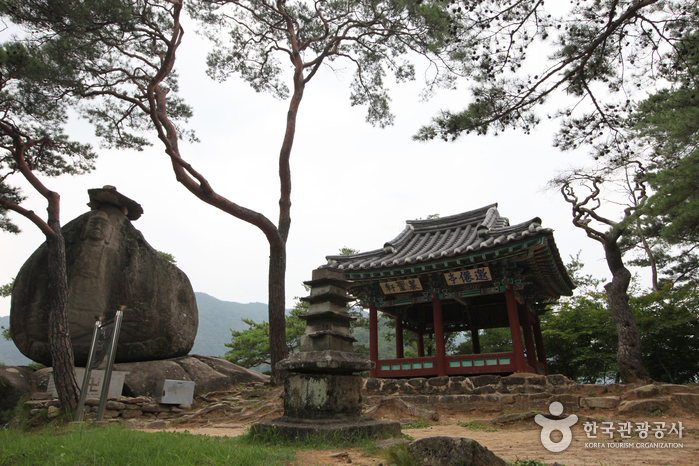
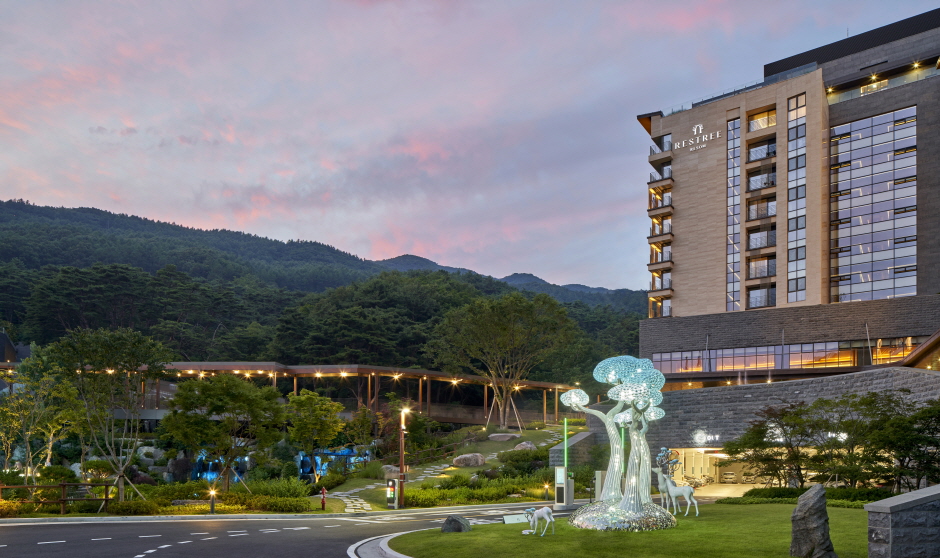
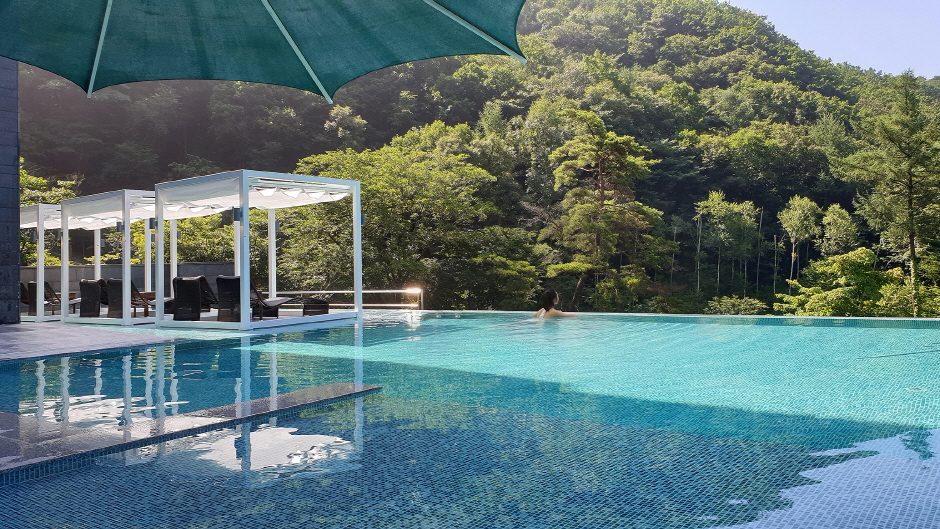
 English
English
 한국어
한국어 日本語
日本語 中文(简体)
中文(简体) Deutsch
Deutsch Français
Français Español
Español Русский
Русский